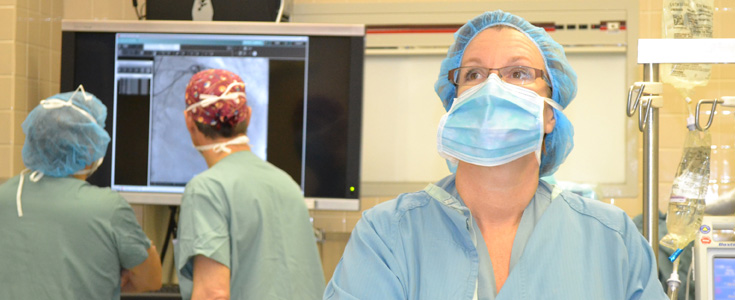
Recently I was on a flight returning from a patient safety conference and was reminded how much we in health care can still learn from the aviation industry.
Just as we were to depart, the pilot came on and said that there would be a short delay as he needed a sign off from maintenance before he could take off.
Related links
Hand hygiene to improve patient safety
Getting pressure ulcers to zero . . . Collaborative Care in action
He came on a short time later and said, we were still waiting for the sign off, and finally he asked us to deplane as maintenance was not able to sign off. All of the passengers were moved to another plane and we safely went on our way.
The pilot didn't get into whether or not he agreed with the maintenance delay or what the problem was. He did not compromise on the safety protocol and as a passenger, I was very glad that he didn't.
The pilot's action reminded me that like aviation, delivering safe health care is a complex activity. But do we always do all of the routine things required to ensure that we can provide the safest care possible? Do we always recognize how important following the steps in the process are to safe care and do we always follow them?
In health care as in all complex systems, it is important that we break things down into steps, and make sure every step is done. In our busy-ness, the habits we adopt, the ways we think or do things sometimes we don't embrace these routine details or actions as important.
We need to create a safety culture that values the routine things and considers them the priority, and - if necessary - encourages people to take a stand like the pilot did when they are missed or overlooked because they are so basic.
What is the nursing role in creating and ensuring a culture of patient safety? Nursing practice has an important impact on health outcomes and safety but engaging in person centred care is the foundation. Screening, prevention, care planning, educating, partnering with people and their families . . . all of these activities are important, but perhaps no action a nurse can take is as important as realizing a person and their family are the most readily available resources for health care providers. Paying attention to what they say is important.
I invite you to reflect on our role in patient safety.
Why? Because patient safety is good for patients. It reduces the burden of illness and protects them from harm. But patient safety is good for the system. It reduces length of stay and reduces the need for unnecessary care and treatment resulting from adverse events.
Patient safety issues are not exclusive to the Winnipeg Health Region. Health care across Canada is challenged by similar issues. That's why the Canadian Patient Safety Institute brought together leaders from across the country, and organizations that are interested in improving patient safety. They are hoping that this consortium can come to consensus on an action plan to improve safety in Canada. Groups and organizations across the country have contributed to the creation of a draft action plan, which focuses on four priority areas: surgery, medications, home care and infection prevention and control.
One of the safety concepts in this plan is the concept of never and always events. As nurses, never events are the things that should not happen, things that we can help to prevent - such as pressure ulcers, falls with injury, wrong sided procedures or medication errors.
And the flip side of this concept is: what are the always events? What must we always do as nurses to ensure safe care? What do we need to do in each and every care encounter we have with people to ensure they get the safest care possible?
Handwashing is an always event, as are risk assessments and or making sure that care plans are in place to address those risks. Timeouts are another always - timeouts to complete surgical checklists, discharge checklists or to double check the labeling and packaging for medication.
But one can't forget in all nursing activity to ensure a standardized approach supported by evidence. The evidence indicates the safest and the best way to do things, so we need to follow it.
What are things in your practice that you always do? What are things you could do to reduce harm?
River Park Gardens is a personal care home that cares for 80 residents. When it opened a few years ago, a number of residents were admitted with pressure ulcers. Nurses at the facility told me they were committed to healing all of those pressure ulcers and to ensuring that they would prevent others from occurring. They were able to heal all but one of the ulcers and now several years later, they continue to have a very low incidence and prevalence.
The staff committed to always following good skin care and prevention and to never having a resident experience a preventable pressure ulcer. That commitment has resulted in high quality and safe resident care.
That's the kind of always/never decision I am inviting you to consider. When you see something that shouldn't be there, think about how you can make it a never event. What in your environment can be changed for the better?
Moreover, we need to set up processes and systems that reduce the potential for unintended error. One simple example is storing medication in proximity. Convenient? Perhaps. But when the packaging is similar and one drug helps and the other causes potential harm, should safety or convenience be most important? We need a better process or system because the potential for error is there - it would be very easy to quickly grab the wrong one.
No health care provider goes to work to do harm. Having systems and practices in place to support reducing harm and enhancing patient safety are essential.
Nurses screen, identify risk but if we're not always doing enough about those risks we identify in a deliberate way, why are we collecting information if we are not doing enough to address those risks in our plan of care and expose people to ongoing and unnecessary risk? The systems need to have clear expectations in the day to day to take appropriate action. And we do have these systems in place for falls, pressure ulcers, and safe medication practice throughout our system.
Accreditation Canada has focused our attention on patient safety through the establishments of Required Organizational Practices (ROPs). They are the way we need to do business to ensure safe care.
Initially when ROPs were introduced, there was some pushback from health care providers, largely because they couldn't see how ROPs linked to patient safety or the link between what is routine and ensuring safe care. Today, I am encouraged by the way in which these same ROPs are being embraced in our day to day practice. Health care providers use them to prevent adverse events and in improving patient safety.
Another key part of preventing adverse events is looking at them when they do happen through the lens of a culture of learning. In examining what happens when things don't go as well as they could, we have an opportunity to learn what to do better.
If this concept makes you feel uncomfortable, remember these concepts are consistent with nursing process. Nurses continuously evaluate care and are often called upon to modify that plan based on their evaluation.
As nurses, you have the ability to influence things for the better. It starts with identifying safety challenges and changing them. You have the opportunity to influence your peers.
You have the capacity to be an advocate for national and international standards for patient safety based on good evidence. And when the evidence is clear, you know the right thing to do, and how the right thing can influence your peers to improve care delivery.
With positive behaviours that improve patient safety, the goal is everyone in the same boat rowing. Peer pressure influences our behaviour, and this can be a good thing.
You have a professional responsibility to ensure the care you deliver is safe. Working with people and their families can help involve them in this process.
What's your always or never? I want to know what you and your colleagues come up with. Drop me a line at [email protected].
